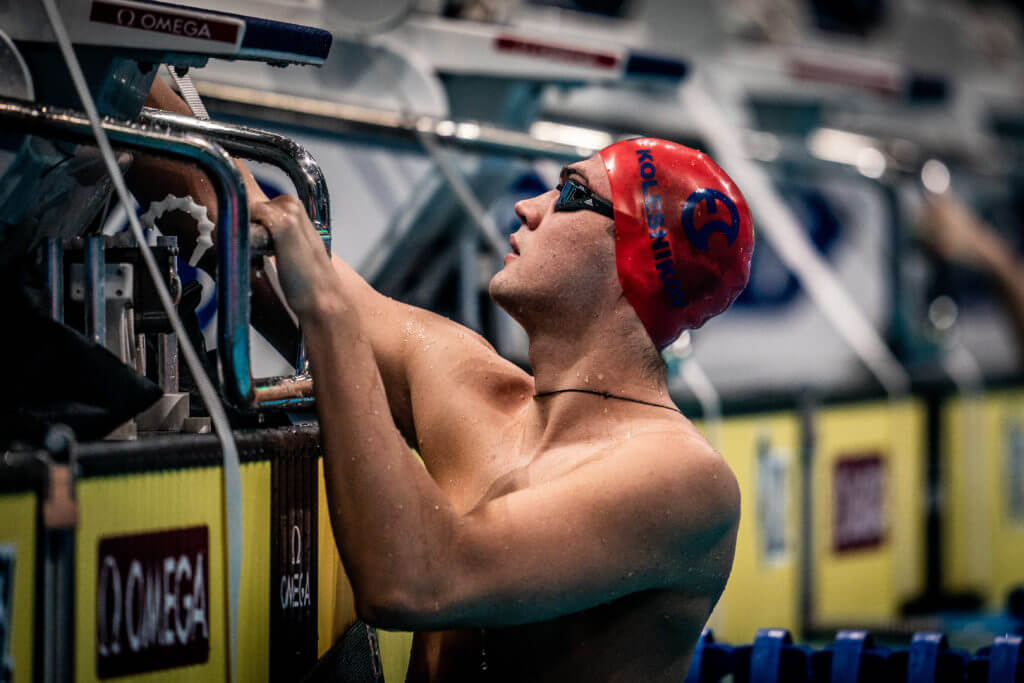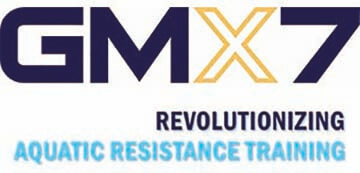An Olympic Men’s 400 Freestyle Relay Showdown: Russia vs. USA

Editorial content for the 2021 Tokyo Olympic Games coverage is sponsored by GMX7.
See full event coverage. Follow GMX7 on Instagram at @GMX7training #gmx7

An Olympic Men’s 400 Freestyle Relay Showdown: Russia vs. USA
The United States has been on a tear in the men’s 400 freestyle relay in recent years. After taking gold at the 2016 Olympic Games, the U.S. followed that performance up with gold at both the 2017 and 2019 World Championships. Led by 100 free world champion Caeleb Dressel, the U.S. sports a deep lineup of sprinters, making it appear to be the favorite as we head toward the Olympics in Tokyo.
However, Russia took the silver medal in 2019, and may be even better in 2021. At Russia’s recent Olympic Trials, Kliment Kolesnikov reset the national record in the 100 freestyle with a time of 47.31. He was joined by world junior record holder Andrei Minakov in qualifying individually for Tokyo in the 100 free. The relay will likely also include Vladislav Grinev, the bronze medalist in the 100 free from the last World Champs, and longtime international standout Vladimir Morozov or Evgeny Rylov. Could the Russian team potentially dethrone the USA? We will try to figure this out by looking closer at the times.
Note: Although the Russian team name and national anthem have been banned from the Olympics, it will still be able to field a relay under the name “Russian Olympic Committee.”
Flat Start Comparison
The simplest way to look at this topic will be to compare the fastest four flat-start times on each team since 2017. These are shown in the table. For the Russian team, the four swimmers included are the ones who will be selected for the Olympic team based on results from Trials.
| USA | Russia | |||
| 1 | Caeleb Dressel | 46.96 | 47.31 | Kliment Kolesnikov |
| 2 | Ryan Held | 47.39 | 47.43 | Vladislav Grinev |
| 3 | Maxime Rooney | 47.61 | 47.57 | Andrei Minakov |
| 4 | Zach Apple | 47.69 | 47.75 | Vlad Morozov |
| Total | 3:09.65 | 3:10.06 |
The result here slightly favors the USA, with Dressel’s 46.96 making up most of the difference. The other three legs appear to basically be a wash. However, we do know that three of these swimmers will go from relay starts, so we may be able to calculate a more accurate prediction by using the fastest flying splits from each side since 2017. Additionally, there is a good chance that when the United States has its Trials, faster times are produced.
Comparison with Relay Starts
For the USA, Caeleb Dressel has consistently led off, so he stays in the leadoff position, and the other three legs have been altered to reflect the fastest flying splits by American swimmers. On the Russian side, both Kolesnikov and Minakov have dropped significantly, so their relay splits are not reflective of their actual speed. For this exercise, I left Minakov’s split as his flat-start time, and put Kolesnikov as the leadoff leg. Further, it was impossible to leave Evgeny Rylov off the relay following a 47.0 split in 2019. I used him to replace Grinev, who had two subpar leadoff legs in 2019.
| USA | Russia | |||
| 1 | Caeleb Dressel | 46.96 | 47.31 | Kliment Kolesnikov |
| 2 | Dean Farris | 47.08 | 47.31 | Vlad Morozov |
| 3 | Zach Apple | 46.86 | 47.57 | Andrei Minakov |
| 4 | Nathan Adrian | 47.08 | 47.02 | Evgeny Rylov |
| Total | 3:07.98 | 3:09.21 |
Here, we see the United States gaining a bigger advantage. Notably, 3:07.98 would break the world record. However, there are a few factors to consider. First of all, the United States has many different options on relays, meaning that they will not necessarily be able to nail down a perfect order (which this simulation assumes). Russia, on the other hand, has basically five options for four spots, so their lineup is more set in stone. Further, the Russians have Minakov’s time from a flat start, which could easily be a half second faster from a flying start. A few adjustments could be made to the above model for a more realistic simulation.
Adjustments
On the United States’ side, a couple adjustments could be made for a more realistic time prediction. First of all, while Dressel swam his personal best of 46.96 in 2019, he was a bit slower leading off the relays. He was just 47.63 leading off the men’s relay, and 47.34 leading off the mixed medley. For this exercise, we will take the faster of the two splits, and have Dressel lead off in 47.34.
Further, there is the consideration that the U.S. will not have this exact lineup at the Olympics. Both Adrian and Farris were outside the top six nationally in 2019, which would leave them outside the Olympic roster. Ultimately, there are no guarantees, and there is no good way to adjust for which swimmers will or won’t make it. However, with the U.S.’ depth, it may be safe to assume that it will have three legs of 47-low or better. Because of this, I chose to leave the other three legs in place.
For Russia, the main adjustment would be Minakov, who we can assume would be about half a second faster going from a flying start. This would put him at a 47.07. Everyone else will probably be around the same.
| USA | Russia | |||
| 1 | Caeleb Dressel | 47.34 | 47.31 | Kliment Kolesnikov |
| 2 | Dean Farris | 47.08 | 47.31 | Vlad Morozov |
| 3 | Zach Apple | 46.86 | 47.07 | Andrei Minakov |
| 4 | Nathan Adrian | 47.08 | 47.02 | Evgeny Rylov |
| Total | 3:08.36 | 3:08.71 |
This projection once again has the United States ahead, but by just 0.35. The results all slightly favor the U.S. on paper.
Conclusion
While the projections slightly favor the United States, the numbers are close enough to indicate an enticing duel is on the horizon. There are many considerations, such as whether the swimmers are having an on meet, or even what swimmers will qualify for the U.S., that could drastically change the outcome.
However, what we can say for sure is that Russia is a real threat. The 0.35 margin in the final projection is miniscule, and indicates that the race could really go either way. Although the Americans may be the favorites, there is a real chance that the Russians could take the gold.
All commentaries are the opinion of the author and do not necessarily reflect the views of Swimming World Magazine nor its staff.





